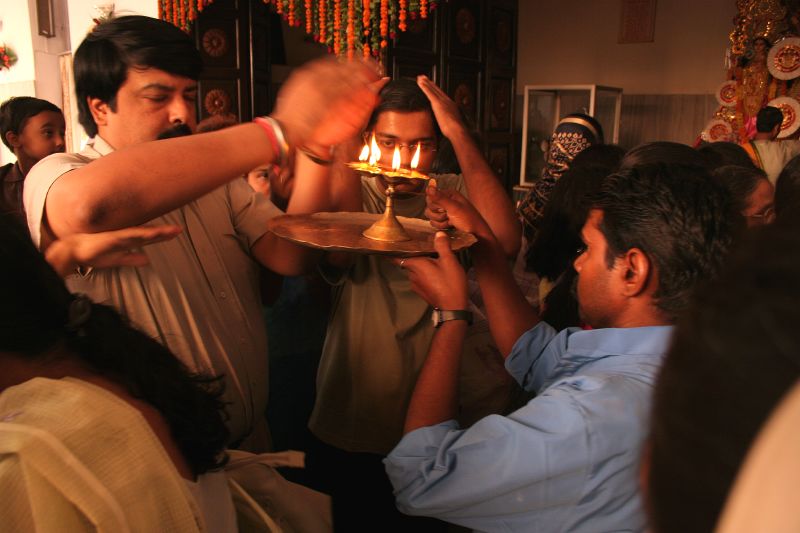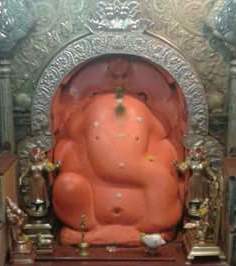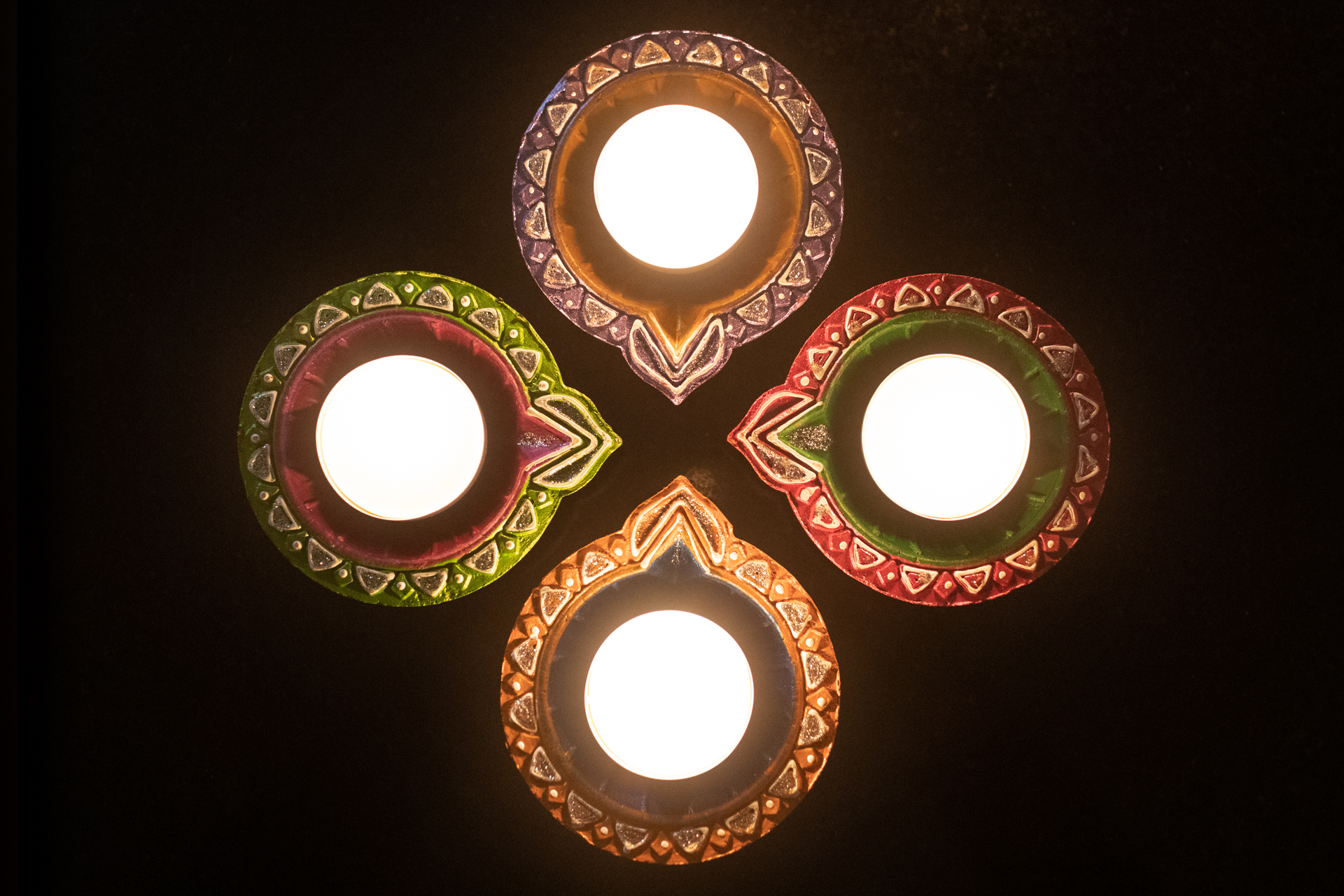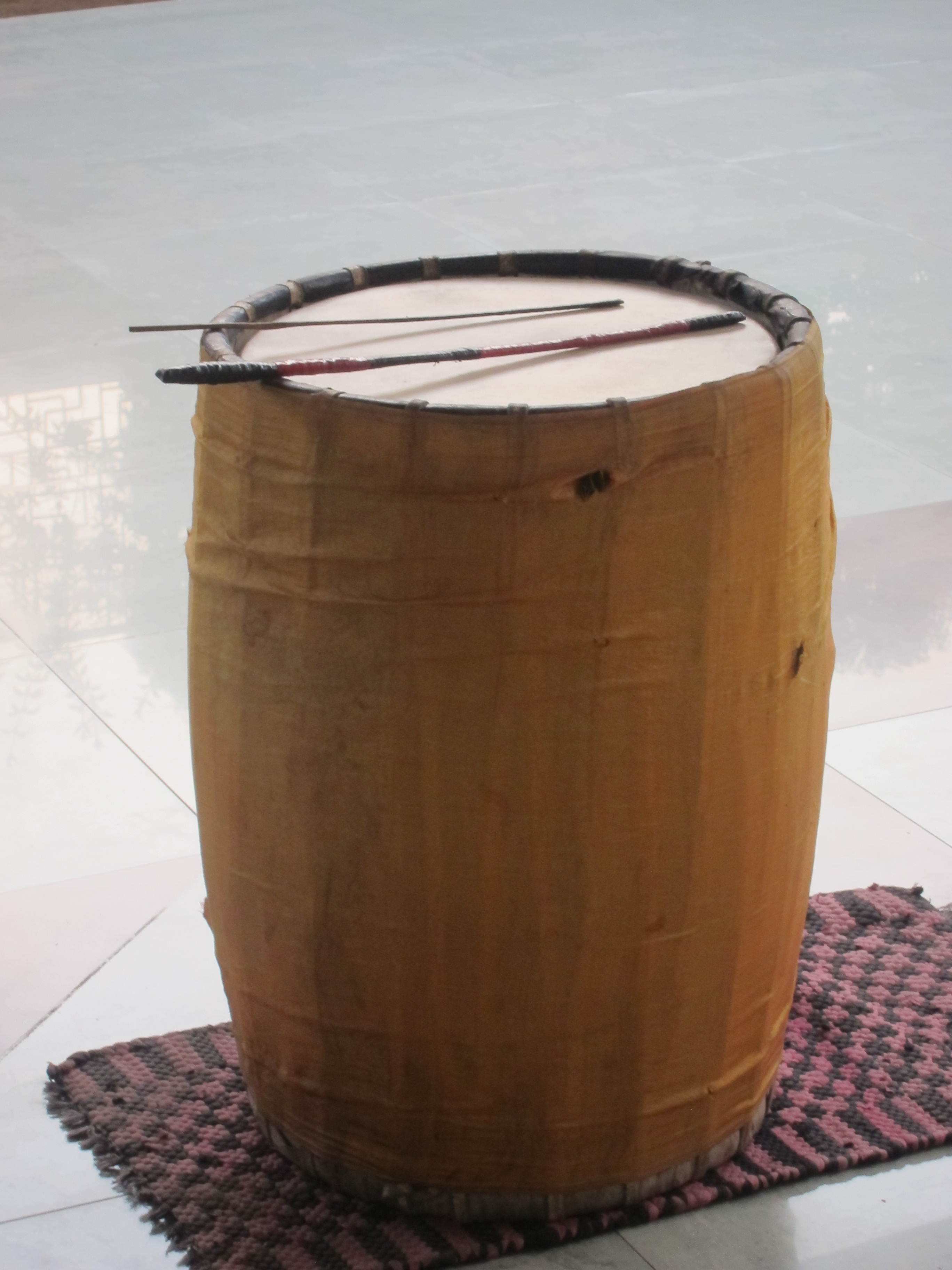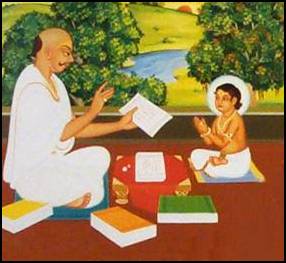|
Arati
''Arti'' () or ''Aarati'' () is a Hindu ritual employed in worship, part of a '' puja'', in which light from a flame (fuelled by camphor, ghee, or oil) is ritually waved to venerate deities. ''Arti'' also refers to the hymns sung in praise of the deity, when the light is being offered. Sikhs have ''Arti'' ''kirtan'' which involves only devotional singing; the Nihang order of Sikhs also use light for ''arti''. Etymology and origin ''Aarti'' is thought to have descended from ''Vedic'' ''fire rituals or yajna''. ''Aarati'' is derived from the Sanskrit word () which means something that removes , “darkness”.James Lochtefeld, An illustrated Encyclopedia of Hinduism, , page 51 A Marathi language reference says it is also known as (). According to Steven Rosen, ''arti'' means "before night" or symbolic end of the night to the worshipper's "material sojourn - he or she is now situated in the light of God's devotion."Rosen, Steven (2006). ''Essential Hinduism''. Praeger Publishers ... [...More Info...] [...Related Items...] OR: [Wikipedia] [Google] [Baidu] |
Sukhakarta Dukhaharta
''Sukhakarta Dukhaharta'' (literally "harbinger of happiness and dispeller of distress", , ), also spelled as ''Sukhkarta Dukhharta'', is a popular Marathi arati, song or bhajan (devotional song) dedicated to the Hindu god Ganesha, composed by the saint Samarth Ramdas (1608 - 1682 CE). It is included in the "most standard and almost universal" aarti songs sung at the start of Puja (worship rituals) of Ganesha in Maharashtra, especially in his festival Ganesh Chaturthi as well as in Ganesha temples in the region. Background Ganesha is the Hindu god of wisdom, knowledge and new beginnings. He is depicted with an elephant head. Samarth Ramadas was inspired to compose the arati by seeing the icon of Mayureshwara (a form of Ganesha) at Morgaon Ganesha Temple, the chief shrine in the Ashtavinayaka pilgrimage circuit, consisting of eight Ganesha temples around Pune. The arati is composed in the raga (musical mode) Jogiya (Jogia). Pratapaditya Pal describes the "addresses and refe ... [...More Info...] [...Related Items...] OR: [Wikipedia] [Google] [Baidu] |
Diya (lamp)
A diya, diyo, deya, deeya, dia, divaa, deepa, deepam, deep, deepak or saaki () is an oil lamp made from clay or mud with a cotton wick dipped in oil or ghee. These lamps are commonly used in the Indian subcontinent and they hold sacred prominence in Hindu, Sikh, Buddhist, and Jain prayers as well as religious rituals, ceremonies and festivals including Diwali. Traditional use Diyas are symbolically lit during prayers, rituals, and ceremonies; they are permanent fixtures in homes and temples. The warm, bright glow emitted from a diya is considered auspicious, regarded to represent enlightenment, prosperity, knowledge and wisdom. Diyas represent the triumph of light over dark, good over evil with the most notable example of this being on the day of Diwali. Diwali is celebrated every year to celebrate the triumph of good over evil as told in the Hindu epic, the Ramayana. Diwali marks the day Rama, Sita, and Lakshmana returned home to Ayodhya after 14 years in exile, after the def ... [...More Info...] [...Related Items...] OR: [Wikipedia] [Google] [Baidu] |
Mahābhūta
''Mahābhūta'' is Sanskrit for "great element". However, very few scholars define the five mahābhūtas in a broader sense as the five fundamental aspects of physical reality. Hinduism In Hinduism's sacred literature, the "great" elements (''mahābhūta'') are fivefold: aether, air, fire, water and earth. See also the Samkhya Karika of Ishvara Krishna, verse 22. For instance, the describes the five "sheaths" of a person (Sanskrit: '' puruṣa''), starting with the grossest level of the five evolving great elements: :From this very self did aether come into being; from aether, air; from air, fire; from fire, water, from water, the earth; from the earth, organisms; from organisms, foods; and from foods, people. Different from and lying within this people formed from the essence of foods is the self consisting of lifebreath. Different from and lying within this self consisting of breath is the self consisting of mind. Different from and lying within this self consisting of ... [...More Info...] [...Related Items...] OR: [Wikipedia] [Google] [Baidu] |
Dhak (instrument)
The dhak is a huge membranophone instrument from Bengal and Assam. The shapes differ from the almost cylindrical to the barrel. The manner of stretching the hide over the mouths and lacing also varies. It suspended from the neck, tied to the waist and kept on the lap or the ground, and usually played with wooden sticks. The left side is coated to give it a heavier sound. It is of medieval origin, and is used in Hindu religious festivals of the region, especially of Sakta and Shaiva traditions, including Durga Puja, Kali Puja and Charak Puja. The drum beats, mostly played by the Bengali Hindu community, along with the ''arati'' (invocation dance) forms an integral part of Durga Puja unique to Bengal. The Tea-garden community, tea-tribes of Assam play ''dhak'' along with ''Nagara (drum), nagara''. ''The Statesman (India), The Statesman'' wrote, "Durga Puja does not assume the festive aura without the maddening beats of the dhak, the large drum that people hang around their neck ... [...More Info...] [...Related Items...] OR: [Wikipedia] [Google] [Baidu] |
Durga Puja
Durga Puja (ISO 15919, ISO: , ), also known as Durgotsava or Shaaradotsava, is an annual festival originating in the Indian subcontinent which pays homage to the Hinduism, Hindu goddess Durga, and is also celebrated because of Durga's victory over Mahishasura. It is the biggest festival of Bengali Hindus and the Indian state of West Bengal. Durga Puja in Kolkata, Durga Puja as celebrated in Kolkata, West Bengal's capital city, was inscribed on the UNESCO Intangible Cultural Heritage Lists, intangible cultural heritage list of UNESCO in December 2021. In addition to West Bengal, Hindu Bengalis are native to Bangladesh and Indian state of Tripura, Barak Valley, Assam (Barak Valley), Jharkhand and Kosi-Seemanchal, Bihar (Kosi-Seemanchal); Therefore, Durga Puja is performed with great devotion in these places as well. The festival is observed in the Indian calendar in the month of Ashwin, Ashvin, which corresponds to September–October in the Gregorian calendar. Durga Puja is ... [...More Info...] [...Related Items...] OR: [Wikipedia] [Google] [Baidu] |
Shrinathji
Shrinathji is a form of Krishna, manifested as a seven-year-old child. The principal shrine of Shrinathji is the Shrinathji Temple in the temple city of Nathdwara, 48 kilometres north-east of Udaipur city in Rajasthan, India. Shrinathji is the central presiding deity of the Vaishnava sect known as Pushtimarg (''the way of grace'') or the Vallabha Sampradaya, established by Vallabhacharya. Shrinathji is worshipped mainly by followers of Bhakti Yoga and the Vaishnavas in Gujarat and Rajasthan, as well as the Bhatias among others. Vitthal Nathji, son of Vallabhacharya institutionalised the worship of Shrinathji at Nathdwara. On account of the popularity of Shrinathji, Nathdwara city itself is referred to as ‘Shrinathji’. People also call it Bava's (Shreenathji Bava) Nagri. Initially, the child Krishna deity was referred to as Devadāman ("''the conqueror of Gods''" referring to the over-powering of Indra by Krishna in the lifting of Govardhan hill). Vallabhacharya n ... [...More Info...] [...Related Items...] OR: [Wikipedia] [Google] [Baidu] |
Pushtimarg
The Puṣṭimārga, also known as Pushtimarg (Path of Nourishing or Flourishing) or Vallabha Sampradāya, is a Hindu Vaiṣṇava saṁpradāya. It was established in the early 16th century by Vallabha (1479–1530) and further developed by his descendants, particularly his son Viṭṭhalanātha. Followers of the Puṣṭimārga worship Kr̥ṣṇa and engage in devotional practices centered around the youthful Kr̥ṣṇa as depicted in the ''Bhāgavata Purāṇa'', and the pastimes at Govardhan Hill. The Puṣṭimārga sect follows the Śuddhadvaita philosophy of Vallabha. According to this philosophy, Kr̥ṣṇa is considered the supreme deity and the source of everything. The human soul is believed to be imbued with Kr̥ṣṇa's divine light, and spiritual liberation is thought to result from Kr̥ṣṇa's grace. The sect worships Kr̥ṣṇa through ''sevā'', a practice in which his idols are served and entertained with food, drink, music, and art, recreating his ... [...More Info...] [...Related Items...] OR: [Wikipedia] [Google] [Baidu] |
Jay Sadguru Swami
Jay Sadguru Swami is the Aarti, arti sung at Swaminarayan Sampraday, Swaminarayan Sampradaya mandirs. This arti was composed by Muktanand Swami on 5 November 1802. During the arti, a lighted lamp is waved before murtis, representations of Swaminarayan and other deities. In Shikharband Mandir, shikharbaddha mandirs, arti is performed five times a day; in Dev Mandir, dev mandirs, also known as Hari mandirs, arti is performed in the morning and evening only. See also * Swaminarayan * Swaminarayan Sampradaya References Hindu music Swaminarayan Sampradaya Aarti {{Hinduism-stub ... [...More Info...] [...Related Items...] OR: [Wikipedia] [Google] [Baidu] |
Swaminarayan
Swaminarayan (IAST: '; 3 April 1781 – 1 June 1830), also known as Sahajanand Swami, was a yogi and Asceticism, ascetic believed by followers to be a manifestation of Krishna or the highest Theophany, manifestation of Purushottama, around whom the Swaminarayan Sampradaya developed. In 1800, he was initiated into the ''Uddhava'' ''sampradaya'' by his guru, Swami Ramanand, and was given the name Sahajanand Swami. Despite opposition, in 1802, Ramanand handed over the leadership of the Uddhava Sampradaya to him before his death. According to the Swaminarayan tradition, Sahajanand Swami became known as Swaminarayan, and the Uddhava Sampradaya became known as the Swaminarayan Sampradaya, after a gathering in which he taught the Swaminarayan Mantra to his followers. He emphasized "moral, personal, and social betterment," and ''ahimsa''. He is also remembered within the sect for undertaking reforms for women and the poor, and performing large-scale non-violent yajna, yajñas (fire s ... [...More Info...] [...Related Items...] OR: [Wikipedia] [Google] [Baidu] |
Ganesha
Ganesha or Ganesh (, , ), also known as Ganapati, Vinayaka and Pillaiyar, is one of the best-known and most worshipped Deva (Hinduism), deities in the Hindu deities, Hindu pantheon and is the Supreme God in the Ganapatya sect. His depictions are found throughout India. Hindu denominations worship him regardless of affiliations. Devotion to Ganesha is widely diffused and extends Ganesha in world religions, to Jains and Buddhists and beyond India. Although Ganesha has many attributes, he is readily identified by his Asiatic Elephant, elephant head and four arms. He is widely revered, more specifically, as the remover of obstacles and bringer of good luck; the patron of The arts, arts and Science, sciences; and the Deva (Hinduism), deva of intellect and wisdom. As the god of beginnings, he is honoured at the start of rites and ceremonies. Ganesha is also invoked during writing sessions as a patron of letters and learning., Vigna means obstacles Nasha means destroy. These ideas ar ... [...More Info...] [...Related Items...] OR: [Wikipedia] [Google] [Baidu] |
